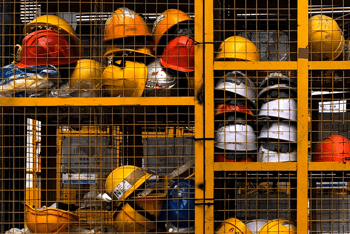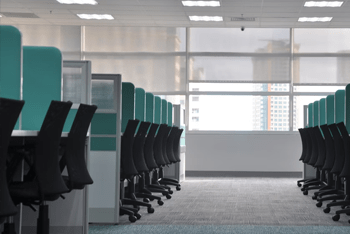
Tips for Smarter Safety in the Workplace
Regroup offers tips for increased workplace safety and identifying areas for improvement, on-site, for remote workers and for your enterprise.
Workplace safety is more than just a good idea. It’s the responsibility of every business, institution and facility to ensure the safety and well being of its employees. Putting basic safety protocols in place is a necessary task for stakeholders and disseminating safety procedures are imperative to success.
In the past, basic items such as first aid kits, fire extinguishers and prominent exit and evacuation signs have been standard tools for workplace safety. However, hybrid, remote and traveling workforces have changed the meaning of safety in the workplace. In order for businesses and other organizations to maintain a high level of safety for their people, it’s time to look at the new normal and best practices for keeping people safe.
Identify Areas of Risk
In nearly every on-site workplace, there are areas that may pose risks to the safety of workers. Whether busy manufacturing floors, warehouses or facility laboratories, many workplaces require heightened caution from team members. Annual safety evaluations can help you identify potential hazards and address them before accidents happen.
Assigning a team to identify areas of concern and recommend action items will be helpful in reducing workplace risks.
 The Appropriate Gear
The Appropriate Gear
Depending on the type of on-site work, personal protective equipment may be a requirement for those working and those visiting your facility. For that reason, keeping an inventory of protective gear — with ample availability for all concerned — is essential for workplace safety. Those items of equipment may include:
- Hearing protection
- Eye protection
- Eye washes
- Hard hats
- Lift belts
- Breathing protection
- Chemical-resistant garments
- Evacuation signage
- Emergency response signage
Getting a consultation and list of recommendations from a trustworthy workplace safety expert can assist processing, manufacturing and other facilities stay ahead of potential hazards and reduce the number of accidents and injuries on the job.
Safety for Remote and Loan Workers
Although we may think of working from home as the safest possible scenario, the considerable increase of remote workers since the onset of COVID-19 brings with it some previously unforeseen needs for companies concerned with safety and team wellness. As we’ve discussed previously, remote workers can oftentimes feel isolated from their teams or develop difficulties balancing work with home life. In many instances, this can lead to poor performance as well as personal dissatisfaction.
Keeping remote and loan workers engaged and alert of their own well being requires additional outreach and communication. For companies with large, dispersed workforces, planned messaging and other notifications can be tremendously useful for keeping employees in the loop, reminding them to take frequent breaks or simply checking in on them.
 Even Offices Need Safety Measures
Even Offices Need Safety Measures
For those who work in office environments, the idea of hazards seems far-fetched. However, it’s still important to consider and discuss safety with office employees, and to have a plan in place that addresses the safety needs of office workers.
Some basic approaches to reducing workplace accidents and injuries to be considered include:
- Providing ergonomic furniture that allows employees to work for extended periods at a lower risk of discomfort.
- Allow and encourage frequent breaks so employees can move around and refresh.
- Keep common areas (like kitchens and restrooms) clean, free of clutter and in a sanitary condition.
- Manage electrical cords, computer cables and other tripping hazards.
- Keep walkways clear of snow, ice and other obstructions during winter months.
- Clearly post emergency exits, emergency response instructions and directions to first aid kits throughout your facility.
Using Communication to Keep Workforces Safer
Mass notification can greatly aid your efforts in providing a safe workplace for your entire team. Regroup has long been trusted as an emergency alert platform by higher education institutions, healthcare facilities and enterprises. When an emergency occurs, Regroup is used to alert others and for administrators to provide instructions and updates.
Incorporating a robust, multi-channel notification system, like Regroup’s, can help improve outcomes, promote a safer work environment and keep your people better informed.
A platform like Regroup also makes it fast and simple to advise your team members of policy updates, new safety regulations or potentially hazardous situations like severe weather or suspicious activity on the premises.
It’s a smart tool for outreach, keeping teams on the same page and responding quickly to critical events in and around the workplace.
Your Next Steps
If your organization is considering a mass notification system for enterprise-wide communications, it’s worth exploring the type of integrations and optional features available. We invite you to schedule a no-hassle demonstration of Regroup Mass Notification to learn more about our platform and the additional functionality available for customizing Regroup to your needs and budget.
Table of Contents
Categories
- Regroup Product Guides
- Disaster Recovery
- Employee Safety
- Routine Communications
- Mass Notification
- Critical Event Management
- Emergency Preparedness
- Corporate
- Insurance
- Business Continuity
- Business
- Education
- Uncategorized
- Nonprofit
- Healthcare
- Hospitality
- Government & Public Services
- Our Clients
- Awards
- COVID-19
- Safety & Preparedness
- Announcements
 The Appropriate Gear
The Appropriate Gear Even Offices Need Safety Measures
Even Offices Need Safety Measures